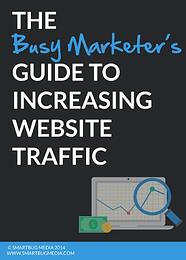
What Is Product-Led Growth and How Can It Fuel Your SaaS Company
May 19, 2020
By Drew Cohen
If you’ve searched for an explanation of product-led growth, you’ve probably run into overwhelming amounts of material that, frankly, overcomplicate an otherwise simple topic. In this post, we’re setting out to do something a little different.
We want to show how this incredibly powerful concept can fuel your SaaS company. So, let’s quickly cover the basics, and then we’ll dive into some strategies that your organization can use to hit the ground running.
What Is Product-Led Growth?
If we start by defining what product-led growth is not, why it’s so powerful quickly becomes clear. Many product experts—such as product managers or product marketers—will say that sales-led and marketing-led growth have had their time in the sun, and now it’s time for products to lead the way.
Simply put, product-led growth (PLG) is a business methodology where key pillars in a strategy—including everything from acquisition to retention—are driven by the product itself. When implemented properly, this methodology can create cross-team organizational alignment.
You may be wondering, Why would a company implement something that didn’t result in better organization alignment?
Good question.
The key here isn’t just alignment, but how that alignment occurs all around the product, which is seen as the single largest source of business growth.
Productled.org explains alignment with the analogy of a prism: When light passes through a prism, it’s fractured into the colors of the rainbow. Reverse this concept and the different colors correspond to a company’s different teams which are all working together to form a single bright light resulting in a premium user experience.
Product-Led Growth’s Impact on SaaS Companies
Software-as-a-service companies have a responsibility to their customers to build reliable products that solve problems, but the teams responsible for producing, marketing, and selling these pieces of software sometimes head down the wrong path.
Whether discussing the inbound methodology, the product-led growth methodology, or any other business methodology out there, it’s critical to focus on what the organization adopting these does with this information. To me, product-led growth is about businesses focusing on making top-notch products that help their customers do their jobs more successfully. It’s a few fancy words put together to say that quality products will sell themselves. Now, as a marketer, I know that’s not completely true—sales and marketing play huge roles in the overall business puzzle—but this methodology aims to ensure that the customer-first approach is front and center.
The impact that product-led growth has had on the SaaS industry is pretty astonishing. Terms like “customer success”, “customer experience”, and “customer champion” all come from this methodology, and again, demonstrate a focus on making sure that people have A+ experiences with products. Companies like Pinterest and Warby Parker are two of my personal favorite examples of product-led companies in the B2C category. Both have an unwavering commitment to their products—one in social media and one in eyewear. Industry aside, when you think of these brands, you think of their products and that is 100 percent the result of the respective organization’s mentality.
Using Product-Led Growth to Fuel Your SaaS Company
Implementing the product-led growth methodology requires more than just flipping a switch. It’s like having a new electrical system installed at your house: It’s going to take more than a day and require some investment, but when it’s finished, the results will be obvious.
For SaaS companies in the ever-too-familiar “high-growth startup” mode, a lot of the focus is on sales and marketing, with questions like “What are some creative campaigns we can launch to help get our name out there?” Although this is a worthwhile conversation to have, product-led growth focuses on virality and word of mouth, which ultimately means that the focus needs to be on users and not buyers.
If we boil this down and get away from buzzwords and marketing speak, we’ll learn that the product needs to sell itself. It needs to be so rock solid that users tell their personal networks, and it needs to be so appealing that users are tempted by freemium offers such as free trials or interactive online demos.
Building trust and delivering a superior user experience to your customers will be the focus in a product-led growth model, and if this remains priority, the blueprint starts to become clear for how this methodology can be so successful in the SaaS world. Build a top-notch product, let people experience it, and you’ll start a chain reaction that looks something like this:
Free trial user → upgrades to premium version → shares experience on social media → their followers sign up for free trials → upgrade to premium version → tell former colleagues at a conference → former colleagues sign up for free trials.
If the product doesn't provide value to the first person, none of the above scenario happens. It's the product that makes or breaks the cycle.
It’s worth noting that the hybrid approach I mentioned earlier is still doable (and worthwhile). A SaaS company can have a product-led growth methodology in place, while still using incredibly creative sales and marketing approaches. You don’t need a freemium model to fit into product-led growth—you could also use a video demo, online educational webinar, and so on.
Sales and marketing can play enormous roles in this process, promoting and educating the masses about the value of the product and the user-first mentality the company has.
I don’t believe in a one-size-fits-all approach when it comes to any methodology. Even our customers who fully adopt the inbound methodology will still be encouraged by our team to explore other outbound tactics when they make sense. Product-led growth is no different. The goal is to find what works for your business and industry. Then, most importantly, the business needs to rally around the selected methodology and establish an unwavering commitment to providing customers value.
.jpg?width=120&height=120&name=DrewCohen-3%20(1).jpg)
About the author
Drew Cohen was formerly the Senior Director of Revenue Operations at SmartBug. Drew developed strategies for organizations in both B2C and B2B verticals. He has unique experience in private-equity owned organizations, early-stage technology startups, sports & entertainment and healthcare. When not marketing, you can find Drew yelling at his television during any Philadelphia team's sporting event. Read more articles by Drew Cohen.





![Sales-Enablement-Battlecard-Template-[for-SaaS-Marketers]-cover](https://www.smartbugmedia.com/hs-fs/hubfs/sales%20battlecard%20template.png?width=200&height=260&name=sales%20battlecard%20template.png)



